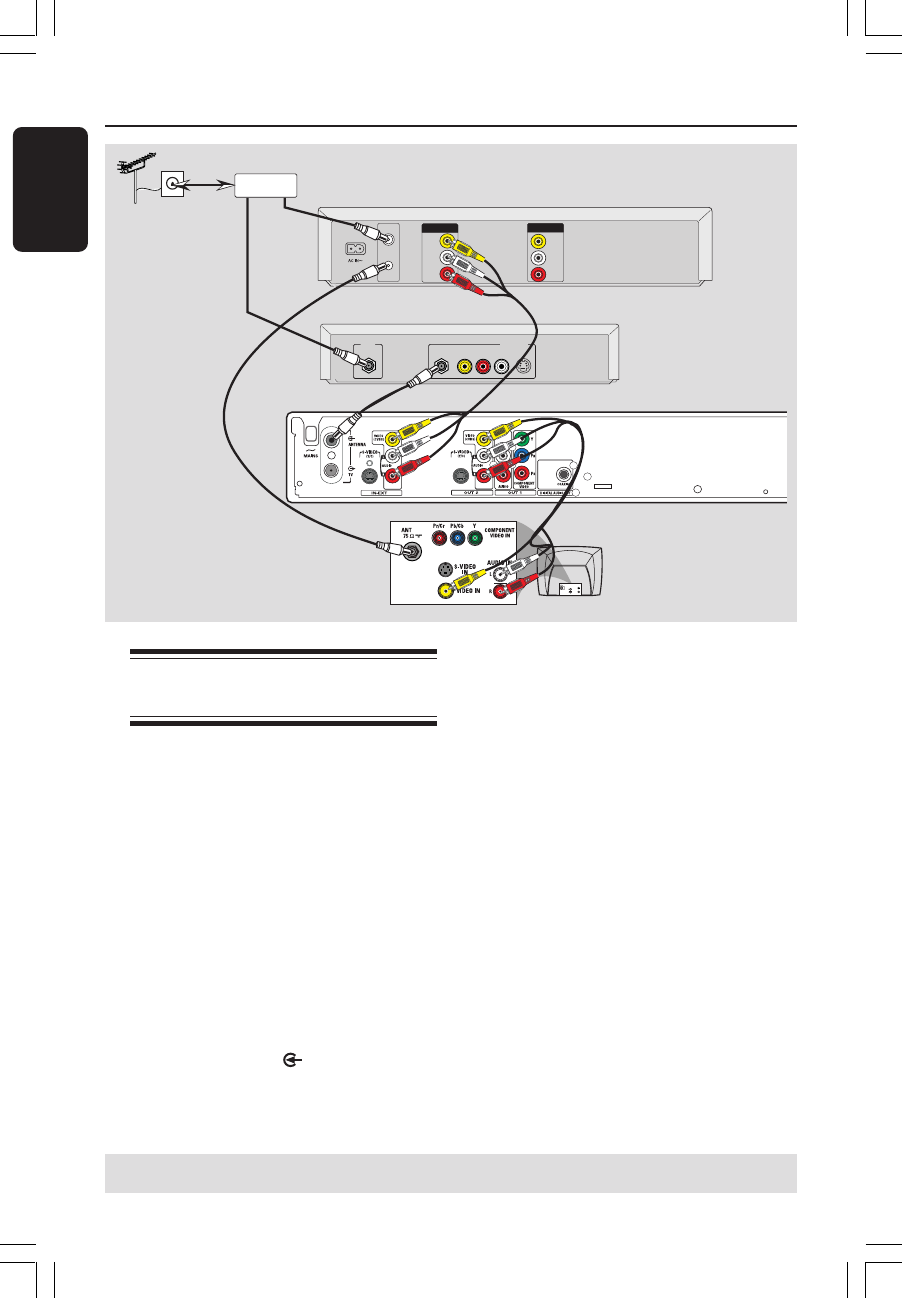
18
English
Back of aVCR (Example only)
VIDEO
IN
OUT
IN
AUDIO
L
AUDIO
R
VIDEO
OUT
AUDIO
L
AUDIO
R
VHF/UHF
RF IN
VHF/UHF
RF OUT
SPLITTER
RF
S-VIDEO
OUT
IN
AUDIO
R L
VIDEO
AUDIO
OUT
S-VIDEO
IN
VIDEO IN
TV
3
4
5
Antenna/cable TV
signals
1
Back of a Cable Box
or Satellite Receiver
(Example only)
Optional Connections (continued)
TIPS: Before making or changing any connections, make sure that all the devices are disconnected from
the power outlet.
2
Connecting to a VCR and
Cable Box/Satellite Receiver
A splitter (not supplied) is required for
this connection.
1 Connect the Antenna/Cable TV signal to a
splitter. Then connect the RF coaxial
cables from the splitter to the antenna
input (RF IN) jack on the VCR and the
Cable Box/Satellite Receiver.
2 Use an RF coaxial cable to connect the
antenna output (RF OUT) jack on the
VCR to the antenna input jack on the TV.
3 Use the supplied RF coaxial cable to
connect the antenna output (RF OUT)
jack on the Cable Box/Satellite Receiver
to the ANTENNA
jack on the DVD
recorder.
4 Use the audio/video cables to connect
VIDEO/AUDIO IN-EXT on the DVD
recorder to the matching VIDEO/AUDIO
output jacks on the VCR.
5 Use the audio/video cables to connect
VIDEO/AUDIO OUT-2 on the DVD
recorder to the matching VIDEO/AUDIO
input jacks on the TV.
Helpful Hints:
– You may use the S-VIDEO (Y/C) jack
instead of VIDEO (CVBS) jack if the
connected device has the same S-VIDEO
input/output jack. This video connection
provides better picture quality.
001_033_dvdr3355_37A_eng5 21/3/05, 3:16 PM18


















